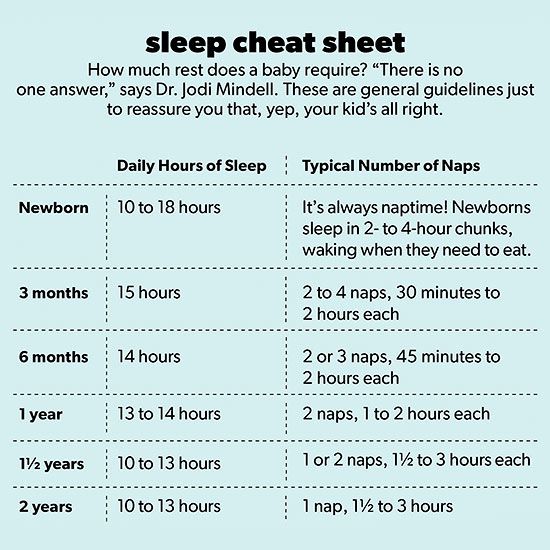Sweet Dreams Ahead: Sleep Training Your 9-Month-Old
Hello there, amazing parents! Are you ready to embark on a journey towards peaceful nights and joyful mornings with your little one? If you’ve been dreaming of a full night’s sleep and believe it’s time to help your 9-month-old master the art of slumber, you’re in the right spot. Today, we’re going to dive into the world of sleep training for 9-month-olds, and let me tell you, it’s going to be as soothing as a lullaby!
Understanding Your 9-Month-Old’s Sleep Needs
Before we whisper our first bedtime story, it’s important to understand what typical sleep looks like for a 9-month-old treasure. Most babies this age need about 14 hours of sleep over a 24-hour period, which includes nighttime sleep and two to three daytime naps. Every baby is unique, but setting up a consistent sleep routine is universally beneficial.
Is Your Baby Ready for Sleep Training?
Like picking the ripest fruit from the tree, timing is everything. To start, your little bundle of joy should be in good health, without any medical issues that might disturb their sleep. If your baby is already able to fall asleep independently for naps or at the beginning of the night, they’re showing signs of sleep readiness – great job!
Choosing the Right Sleep Training Method
When it comes to sleep training, one size does not fit all. Whether you’re about nurturing, gentle approaches or believe in a bit more structure, there’s a technique out there that’ll fit your parenting style like a cozy sleep sack. Here’s a sneak peek at some popular methods:
- The Ferber Method: This technique involves gradually teaching your baby to soothe themselves to sleep. It’s often referred to as ‘graduated extinction’ or ‘check-and-console.’
- The Chair Method: Take a seat, because this method involves you sitting in a chair next to your baby’s crib and slowly moving further away each night until you’re out of the room.
- No Tears Method: For those who want to keep the tears to a minimum, this approach promotes a more gradual adjustment to help baby sleep without much fuss.
- Pick Up, Put Down Method: This gentle technique has you comfort your baby with a cuddle when they fuss, then put them back down drowsy but awake to encourage self-soothing.
Creating a Sleep-Inducing Environment
Let’s set the stage for dreamland success. Your baby’s room should be a sleep sanctuary, complete with a comfortable crib, a firm mattress, and a cool, dark atmosphere. Consider using white noise to help mask household sounds and maintain a temperature that’s just right – not too hot and not too cold.
Establishing a Soothing Pre-Sleep Routine
Rituals are the secret spice to signaling that it’s time to wind down. A consistent bedtime routine might include a warm bath, a cuddly feed, a soft song or story, and sweet kisses goodnight. These activities create a secure and predictable environment for your baby to drift off to dreamland.
By now, you may be feeling ready and excited to begin your sleep training adventure. Remember, patience is key, and it’s okay if the first few nights are a bit rocky. With determination and a sprinkle of our tips, you’ll soon be on your way to restful nights. Continue on to our next section where we’ll discuss how to implement these methods and what to do when bumps in the night arise.
Stay tuned, sleepy parents, and keep that smile bright; your journey to better sleep for your adorable 9-month-old is just a bedtime story away!

Five Must-Know Tips to Prepare for Sleep Training Your 9-Month-Old
- Expect a Learning Curve: Embrace the process with a positive mindset. It’s natural for your baby to take time adjusting to sleep training. They’re learning a new skill, after all! Consistency is your best friend here, so keep that routine steady and predictable.
- One Step at a Time: Introduce sleep training gently. Start with bedtime, as it’s often the easiest time because your baby is the most tired. Once you and your little one are comfortable with this, start applying the techniques to naps.
- Safety First: Inspect the sleep area for any potential hazards. The crib should be free of toys, loose bedding, or anything soft that could pose a risk. Use a sleep sac instead of a blanket for a safer and snugger night’s sleep for your baby.
- Communication Matters: Keep all caregivers in the loop. Make sure that anyone who helps with bedtime knows the plan. Consistency across the board will help your baby adjust more quickly and with less confusion.
- Prepare for Setbacks: Teething, illness, or travel can temporarily disrupt sleep training. Have grace with yourself and your baby when these things happen, and resume your routine as soon as possible.
Navigating Nighttime Wake-Ups
No matter the method, there may be nights when your sweet pea needs a little extra assurance. If your baby wakes up crying, give them a few minutes to see if they can settle back down on their own. If the cries continue, check on them without picking them up. Offer soothing words and a gentle pat, reinforcing the idea that it’s still time to sleep.
However, If you’re using the Pick Up, Put Down Method, you can offer a reassuring cuddle before laying them down again. Patience is essential; your calm presence is reassuring to your baby as they learn self-soothing skills.
Addressing Common Concerns
Worried about crying? Remember, some fussing is natural as babies learn to sleep independently. If your little one is crying more than you’re comfortable with, consider switching to a gentler method or consulting with your pediatrician for guidance.
Concerned about creating bad habits? Consistency will mold healthy sleep habits for your baby. Stick to your chosen method, and over time your little dreamer will learn to sleep through the night.
Making Adjustments Along the Way
Keep an eye on your baby’s response to sleep training. Not every method works for every baby, and it’s okay to make changes. You know your child best, so trust your gut – if something doesn’t feel right, it’s worth exploring other options. A little tweak here and there can make all the difference.
If you find that progress isn’t being made, take a step back to assess. Maybe your baby’s sleep environment needs to be darker, or perhaps a white noise machine would help. Reflect on what’s been happening, make adjustments, and try again.
Supporting Your Baby’s Sleep Beyond Training
Sleep training is just one part of your baby’s sleep journey. As they grow, their sleep needs will change. Be prepared to adapt by reading their cues and adjusting nap times and bedtimes accordingly.
Additionally, prioritize your own rest as well. Sleep training can be taxing, and a well-rested parent is better equipped to handle the ups and downs of parenting. Take turns with your partner if possible, and don’t hesitate to reach out for support when you need it.
See more great Things to Do with Kids in New Zealand here. For more information see here
Disclaimer
The articles available via our website provide general information only and we strongly urge readers to exercise caution and conduct their own thorough research and fact-checking. The information presented should not be taken as absolute truth, and, to the maximum extent permitted by law, we will not be held liable for any inaccuracies or errors in the content. It is essential for individuals to independently verify and validate the information before making any decisions or taking any actions based on the articles.




